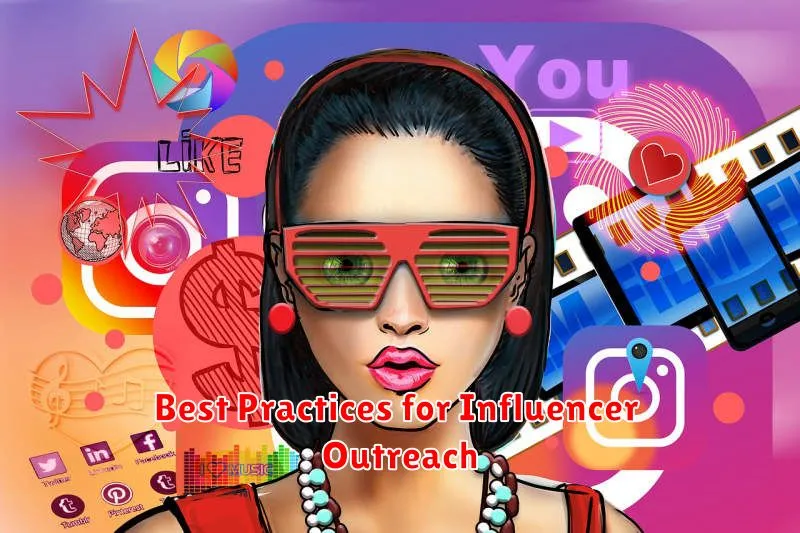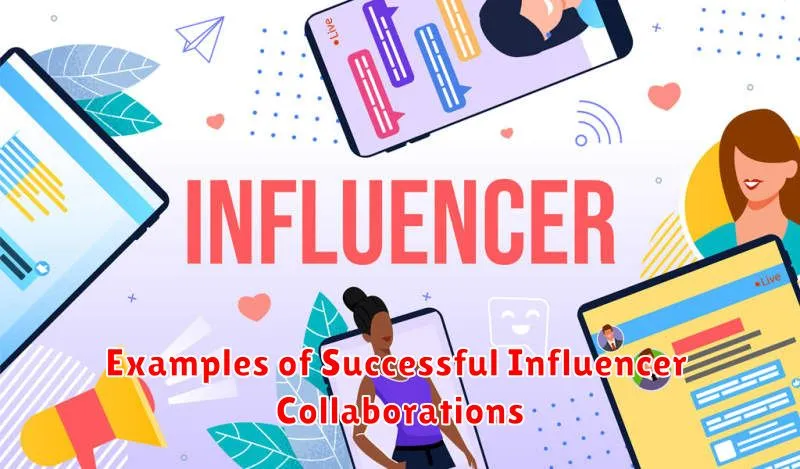In today’s digital landscape, influencer marketing has become an indispensable tool for businesses seeking to expand their reach and connect with their target audience. Influencer collaboration offers a unique opportunity to leverage the credibility and established following of influential figures across various social media platforms. This ultimate guide provides a comprehensive overview of strategies for successful influencer collaborations, enabling businesses to maximize their return on investment and achieve their marketing objectives. From identifying the right influencers to crafting compelling campaigns and measuring results, this guide will equip you with the knowledge and tools you need to succeed in the dynamic world of influencer marketing.
Whether you are a seasoned marketer or new to the concept of influencer collaboration, this guide will provide valuable insights into navigating the complexities of this ever-evolving field. We will explore the key elements of a successful influencer marketing strategy, including defining your target audience, selecting appropriate influencers, negotiating contracts, developing creative content, and tracking campaign performance. By understanding these strategies and implementing best practices, you can harness the power of influencer collaboration to drive brand awareness, generate leads, and ultimately boost your bottom line. This ultimate guide will serve as your roadmap to achieving success in your influencer marketing endeavors.
Identifying the Right Influencers for Your Brand
Selecting the right influencers is crucial for a successful campaign. It’s not just about follower count; it’s about finding influencers whose audience aligns with your target market. A deep dive into their content is essential.
Analyze their audience demographics, engagement rates, and overall brand image. Does their content resonate with your brand values? Are they genuinely passionate about their niche? These factors will significantly impact the effectiveness of your collaboration.
Consider the influencer’s niche and expertise. An influencer specializing in beauty products may not be the best fit for a tech company. Look for influencers whose content organically aligns with your product or service.
Relevance is key. An influencer with a smaller, highly engaged audience relevant to your brand can often deliver better results than an influencer with millions of followers who aren’t genuinely interested in your offering.
Setting Clear Goals and Objectives for Collaboration
Before initiating any influencer collaboration, it’s crucial to define clear goals and objectives. This ensures that the campaign aligns with your overall marketing strategy and delivers measurable results. Ask yourself what you want to achieve with this partnership.
Do you aim to increase brand awareness, drive website traffic, generate leads, or boost sales? Each objective requires a different approach and measurement strategy.
For example, if your goal is to increase brand awareness, you might focus on reach and impressions. If your goal is to drive sales, you might track conversions and revenue generated through the influencer’s unique promotion codes or affiliate links.
Setting Specific, Measurable, Achievable, Relevant, and Time-bound (SMART) goals is essential. This provides a clear framework for the collaboration and allows you to accurately assess its success.
Clearly communicating these goals and objectives to the influencer is vital for a successful partnership. This ensures everyone is on the same page and working towards a common purpose.
Developing a Mutually Beneficial Partnership
A successful influencer collaboration hinges on a mutually beneficial partnership. This means both your brand and the influencer derive value from the relationship. Understanding the influencer’s needs is as crucial as understanding your own.
Open communication is key. Discuss expectations upfront. What does the influencer hope to gain from this collaboration? Increased exposure? Access to your products or services? Monetary compensation? Align these aspirations with your brand’s objectives.
Offer fair compensation. This might involve payment, free products, exclusive access to events, or a combination of these. Recognize the influencer’s time, effort, and audience reach.
Provide creative freedom. While maintaining brand consistency is important, allow influencers to incorporate their unique style and voice. This authenticity resonates with their audience and fosters more engaging content.
Crafting Engaging and Authentic Content
Authenticity is paramount in influencer marketing. Content should align with both the influencer’s established voice and your brand’s identity. Forced or inauthentic content can damage an influencer’s credibility and negatively impact your brand.
Encourage creative freedom while providing clear guidelines. Influencers understand their audience best. Allow them to leverage their expertise to develop content that resonates with their followers.
Focus on storytelling. Compelling narratives connect with audiences on an emotional level. Work with influencers to develop stories that showcase the value of your product or service in a relatable way.
Incorporate high-quality visuals. Visually appealing content captures attention and enhances engagement. Encourage the use of professional photography and videography whenever possible.
Consider the platform. Content formats should be tailored to the specific platform being used. Short-form video might be ideal for TikTok, while longer-form content might be more suitable for YouTube.
Measuring the Impact of Influencer Marketing Campaigns
Measuring the success of your influencer marketing campaigns is crucial to understanding return on investment and optimizing future strategies. Key performance indicators (KPIs) should be defined before the campaign begins, aligning with your overall marketing objectives.
For brand awareness campaigns, track metrics such as reach, impressions, and social media mentions. An increase in these metrics indicates greater brand visibility. Engagement metrics like likes, comments, shares, and click-through rates are valuable for assessing audience interaction with the influencer’s content.
When the goal is driving sales or leads, track website traffic originating from the influencer’s platforms, conversions, and promo code usage. These data points provide quantifiable evidence of the campaign’s impact on your bottom line. Utilizing UTM parameters and dedicated landing pages can help accurately attribute conversions to specific influencer activities.
Regularly monitoring these KPIs throughout the campaign allows for real-time adjustments and optimizations. Post-campaign analysis provides valuable insights for refining future collaborations and maximizing the impact of influencer marketing efforts.
Negotiating Contracts and Payment Terms
A well-defined contract is crucial for a successful influencer collaboration. It protects both the brand and the influencer, ensuring clear expectations and preventing misunderstandings.
Key elements to include are the scope of work, deliverables (e.g., number of posts, stories, videos), timeline, payment terms, usage rights, and exclusivity clauses (if any). Clearly outline the content approval process and any revisions allowed.
Payment can be based on various metrics, such as engagement, reach, or deliverables. Common payment models include flat fees per post, cost per engagement (CPE), or cost per acquisition (CPA). Negotiate a fair rate that aligns with the influencer’s audience and the campaign’s objectives.
Be transparent about payment timelines and methods. Specify whether payment will be made upfront, after content delivery, or based on performance milestones. Ensure the contract clearly addresses potential issues, such as content underperformance or campaign cancellation.
Building Long-Term Relationships with Influencers
While one-off campaigns can be effective, building long-term relationships with influencers can yield significant benefits for your brand. Consistency is key in influencer marketing, and a long-term partnership allows for deeper integration of your brand into the influencer’s content.
Nurturing these relationships involves more than just contract renewals. It requires genuine engagement with the influencer’s content, open communication, and providing them with the resources they need to succeed. Think of them as an extension of your marketing team, not just a paid promoter.
Offering exclusive opportunities, such as early access to products or involvement in product development, can solidify the relationship. This demonstrates your commitment to the partnership and provides the influencer with valuable content for their audience. Regularly checking in and offering support beyond the contracted deliverables can foster a sense of loyalty and mutual respect.
Staying Compliant with FTC Guidelines
Maintaining transparency and adhering to the Federal Trade Commission (FTC) guidelines is crucial for any successful influencer marketing campaign. Non-compliance can lead to significant legal and reputational damage. The FTC requires clear and conspicuous disclosure of any material connection between a brand and an influencer when promoting products or services.
Influencers must clearly disclose when they have received any form of compensation, including free products, discounts, or payment, in exchange for their endorsement. Disclosures should be easily noticeable and understandable to the audience. Using vague terms like “sponsored” or “partner” is often insufficient. Instead, influencers should use unambiguous language like “#ad,” “#sponsored,” or “Paid partnership with [brand name]” at the beginning of their posts.
Furthermore, the disclosure should not be buried within a long string of hashtags or placed where it’s easily missed. It should be prominent within the post itself, ideally at the beginning, or clearly stated in a video or audio format. Both brands and influencers are responsible for ensuring compliance with these guidelines. Regularly reviewing FTC guidelines and staying updated on any changes is essential for avoiding potential violations.
Best Practices for Influencer Outreach

Effective influencer outreach is crucial for securing successful collaborations. Personalization is key. Avoid generic templates. Research each influencer thoroughly and tailor your message to demonstrate genuine interest in their work and audience.
Be upfront about your expectations and objectives for the collaboration. Clearly outline the campaign details, including deliverables, timelines, and compensation. This transparency fosters trust and helps ensure alignment from the outset.
Respect the influencer’s time. Keep your initial outreach concise and to the point. Highlight the mutual benefits of the partnership and offer to provide more detailed information upon request. Follow up strategically, but avoid excessive contact.
Build relationships before pitching. Engage with their content authentically, leaving thoughtful comments and sharing their posts. This demonstrates genuine interest and increases the likelihood of a positive response to your outreach.
Examples of Successful Influencer Collaborations

Examining successful collaborations provides valuable insights for developing your own strategies. Here are a few examples demonstrating effective influencer partnerships across different industries:
Example 1: Fashion Brand & Micro-Influencer
A sustainable fashion brand partnered with a micro-influencer known for her ethical and minimalist lifestyle. The influencer created a series of Instagram posts showcasing how she incorporated the brand’s clothing into her everyday wardrobe. This resonated with her engaged audience, driving traffic to the brand’s website and increasing sales.
Example 2: Tech Company & Gaming Influencer
A tech company launching a new gaming headset collaborated with a popular Twitch streamer. The influencer used the headset during live streams, providing real-time feedback and demonstrating its features. This generated significant buzz and pre-orders for the product.
Example 3: Food Brand & Lifestyle Influencer
A health food brand partnered with a lifestyle influencer who emphasized healthy eating and wellness. The influencer developed recipes using the brand’s products and shared them across their social media platforms. This campaign expanded brand awareness and drove product trial amongst the influencer’s followers.

